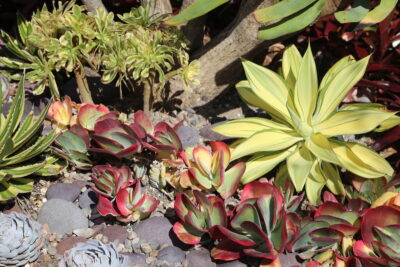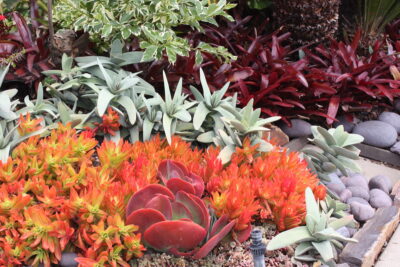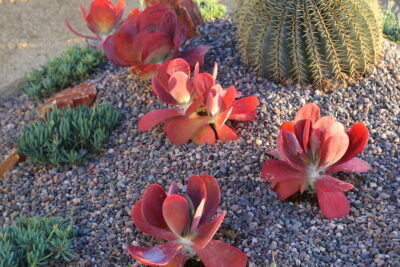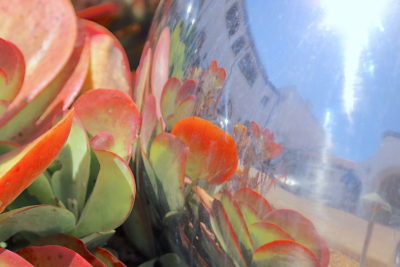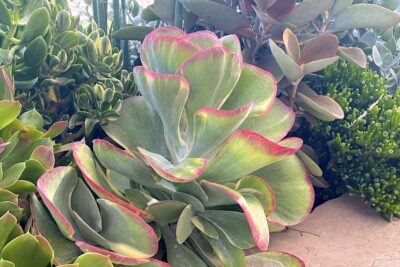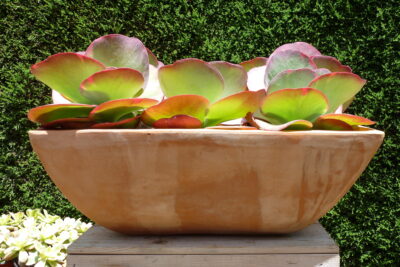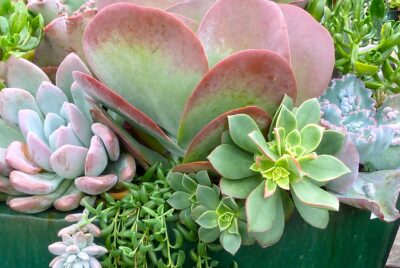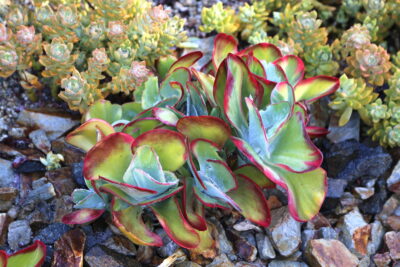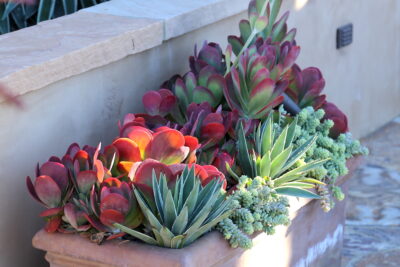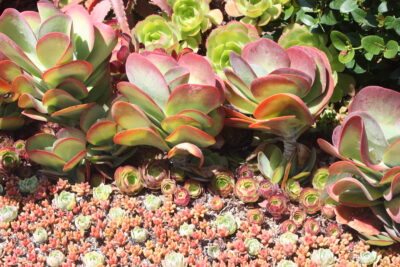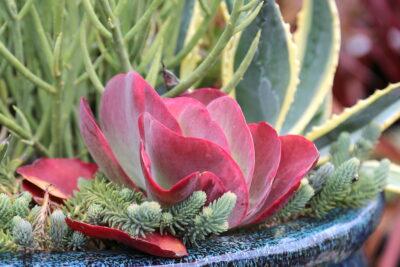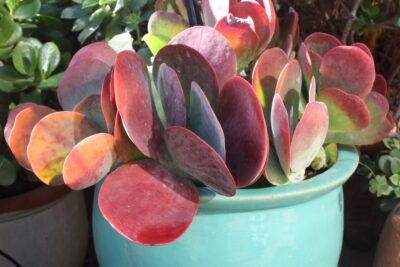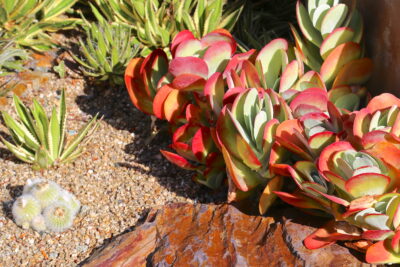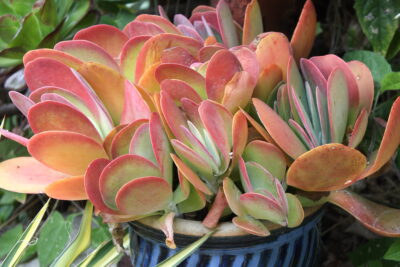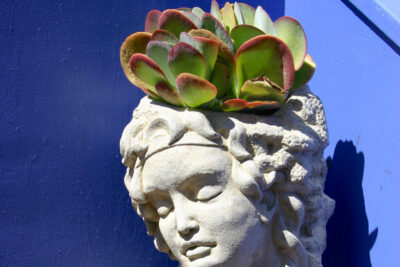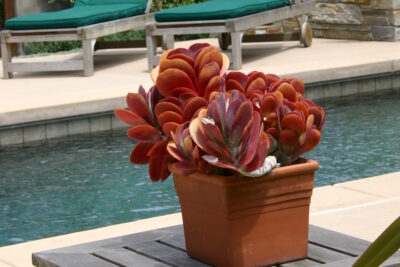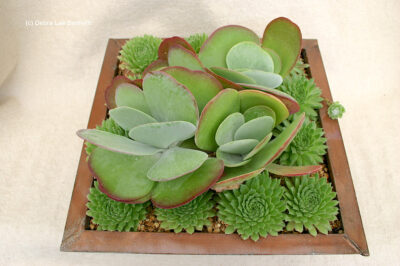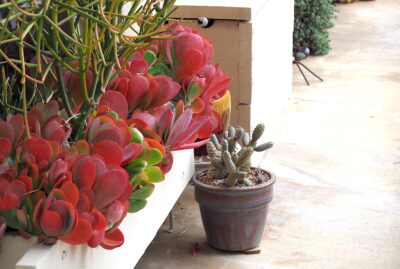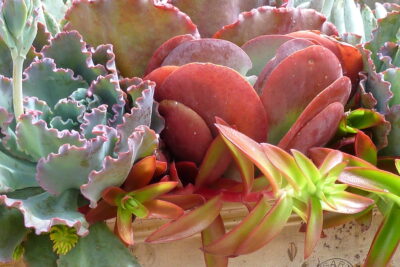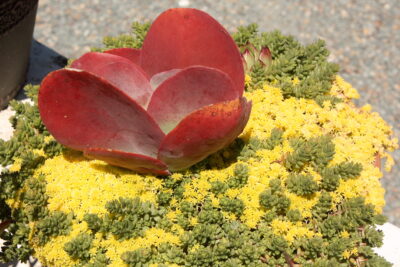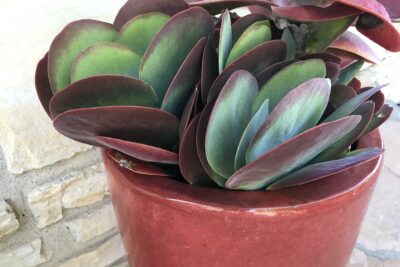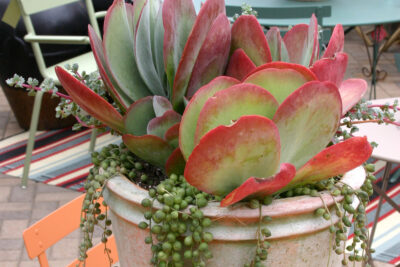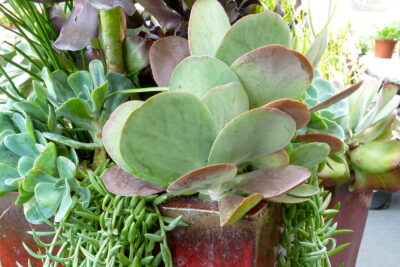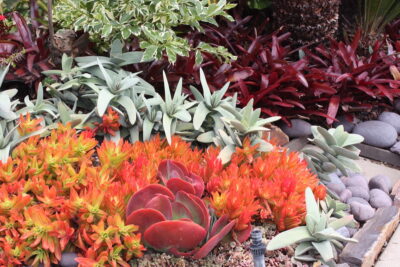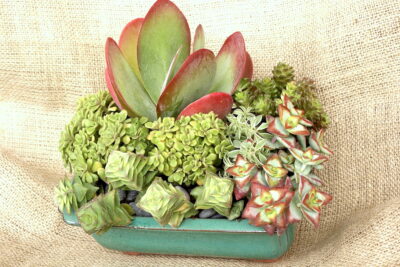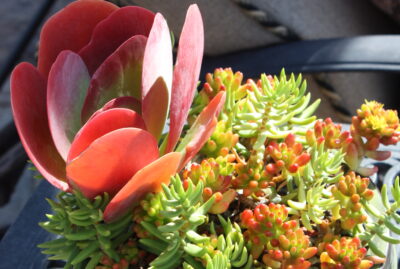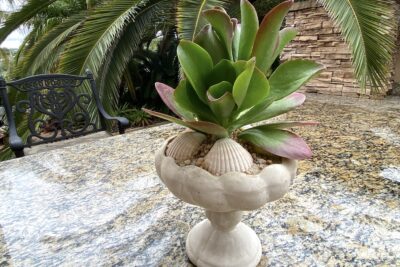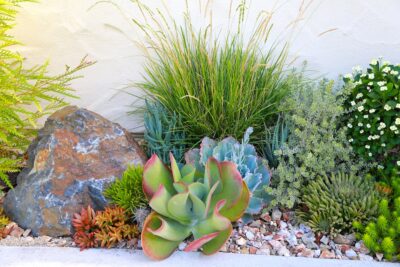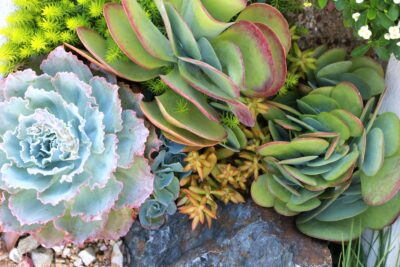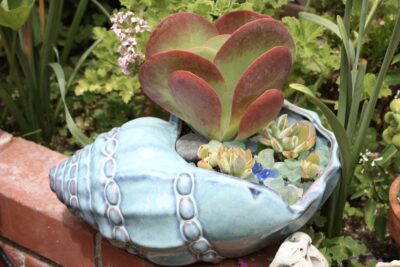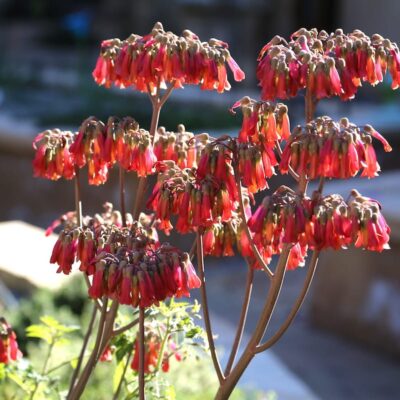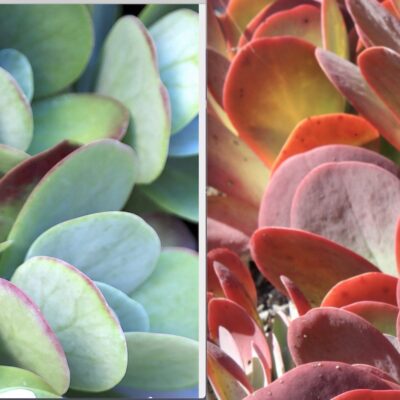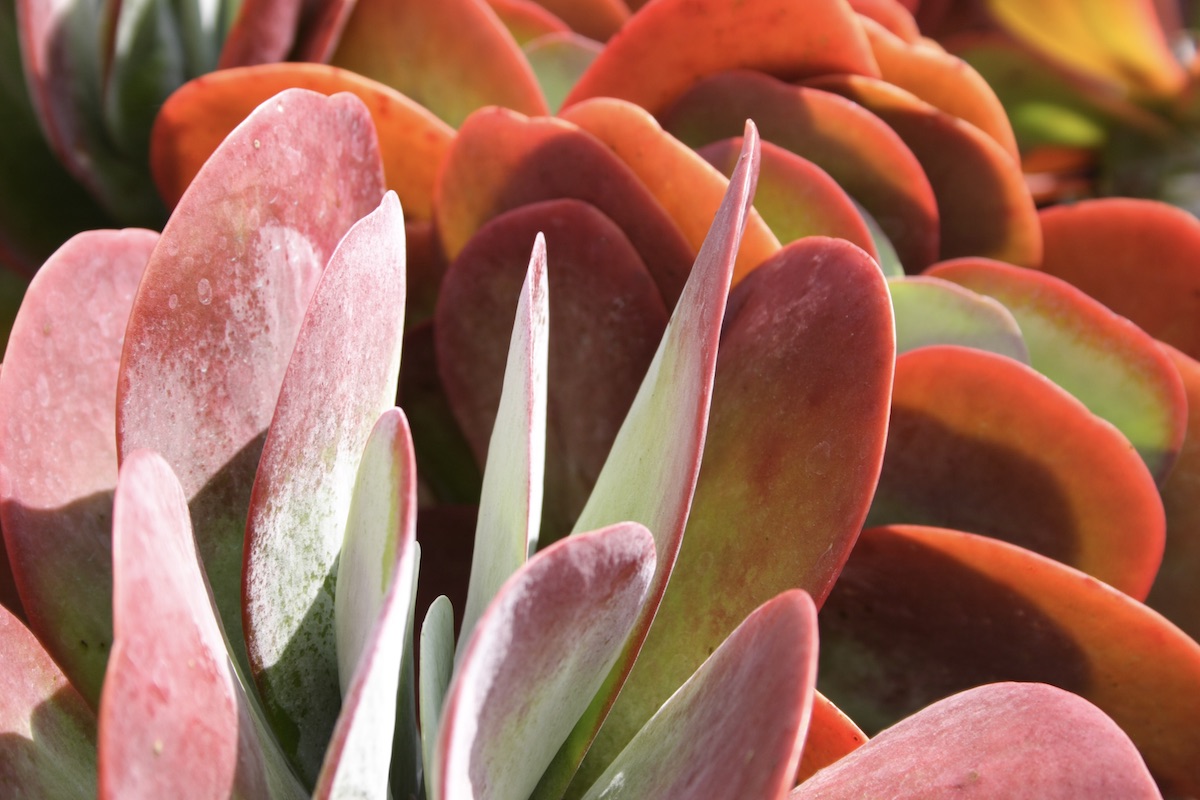
About Kalanchoe luciae (succulent flapjacks)
Kalanchoe luciae, commonly called paddle plant or flapjack plant, is a highly popular succulent due to its bright coloration and flat, rounded, pancake-like leaves. These are green near the stem and red on the edges.
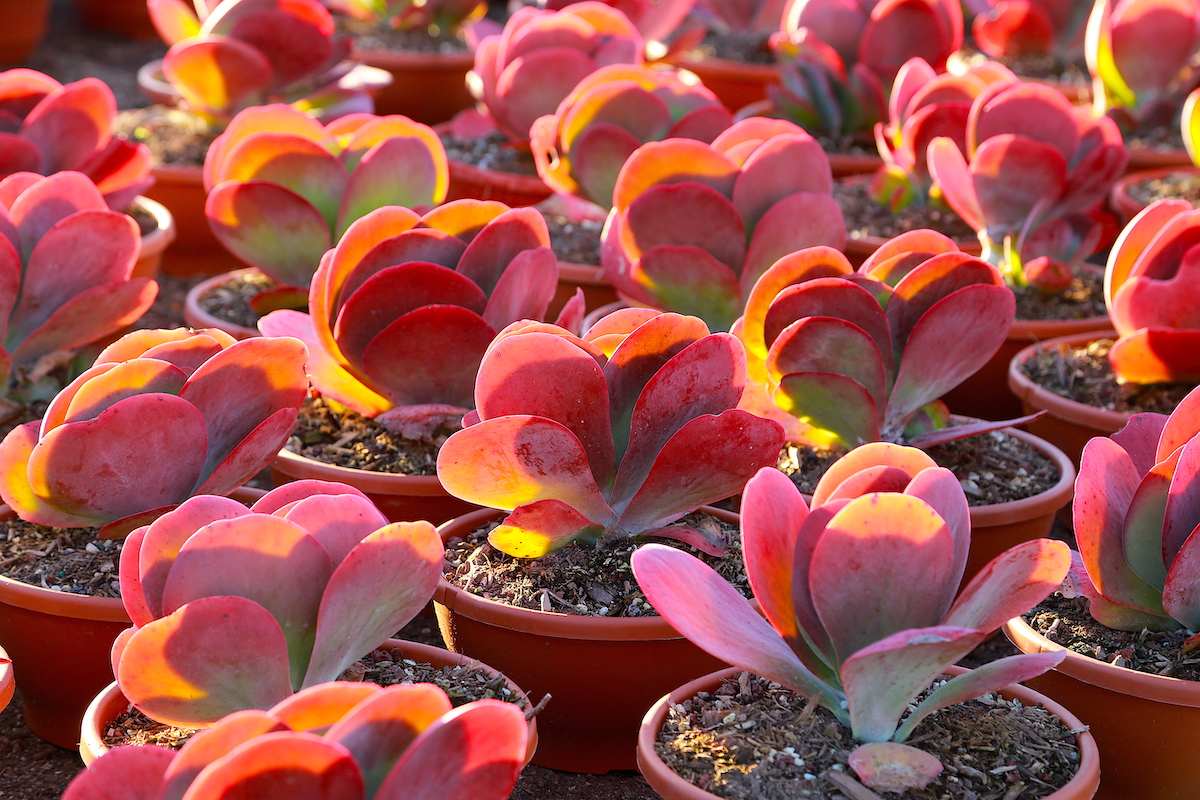
Kalanchoe luciae, perfectly colored
Shades of red in paddle plants vary from rose and magenta to burgundy; greens go from lime to teal blue.
Here's how to select and grow pancake kalanchoes and keep their colors vibrant.
Those red leaves!
It’s true of Kalanchoe luciae---and many crassulas and aloes---the more light, the redder the leaves and the tighter the growth.
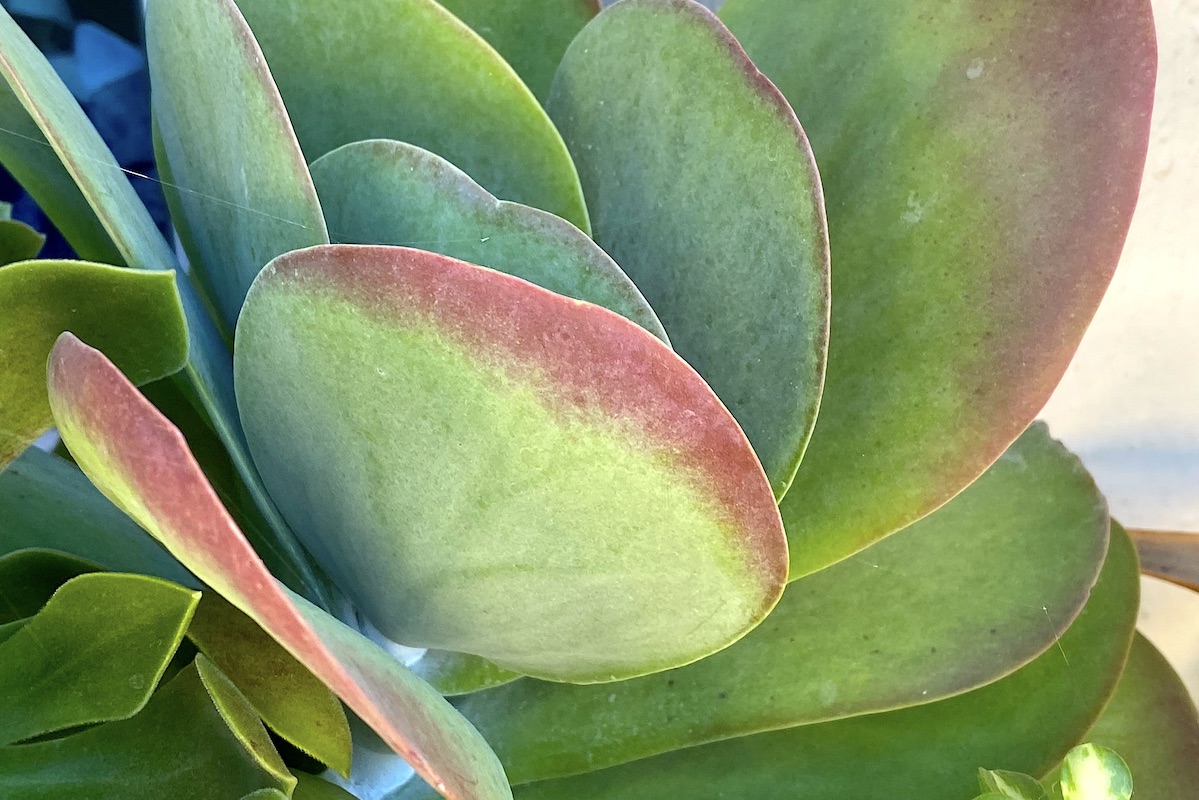
Kalanchoe luciae, too little light
Less light, the looser the structure, so more sun hits the surface of the leaves. Too little sun makes plants lose their red hues and stretch toward light.
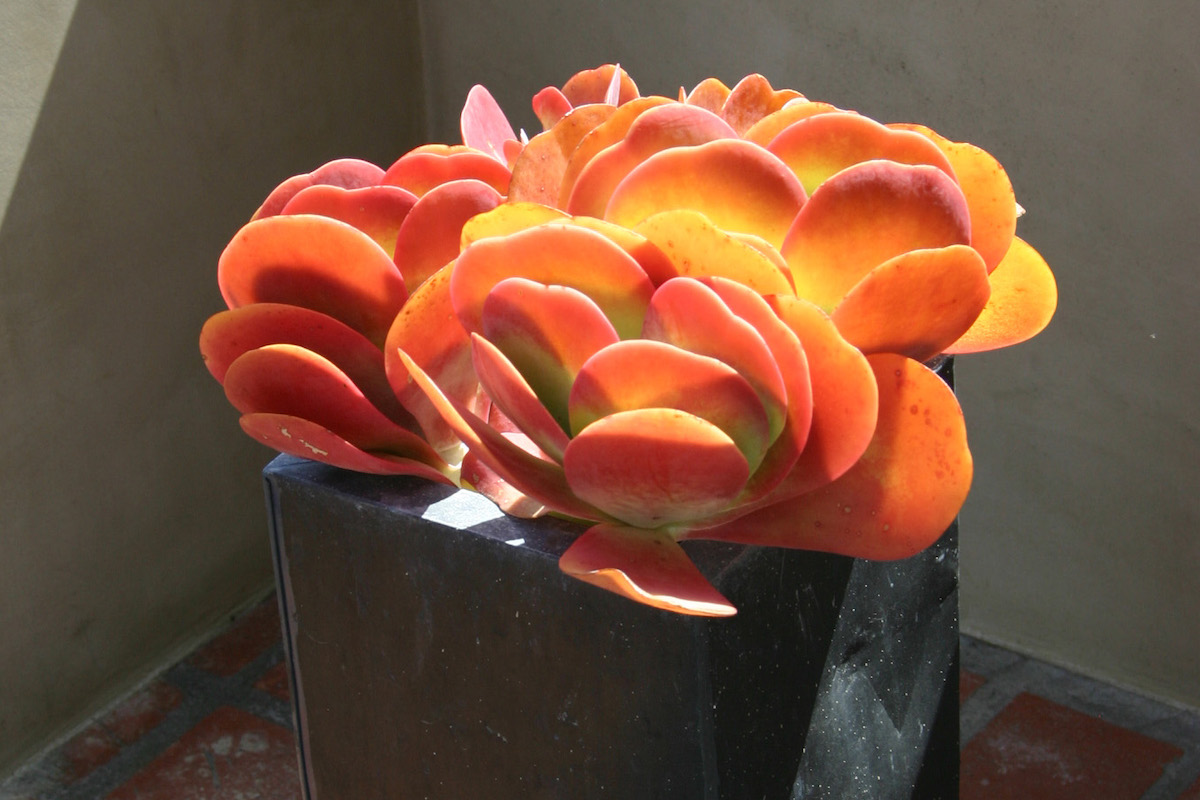
Kalanchoe luciae, showing some sun stress
Too much sun turns leaves orange and eventually yellow, and plants become compact to protect their vital inner core.
Sun, not enough water, or being nipped by frost can make leaf edges dry and brittle.
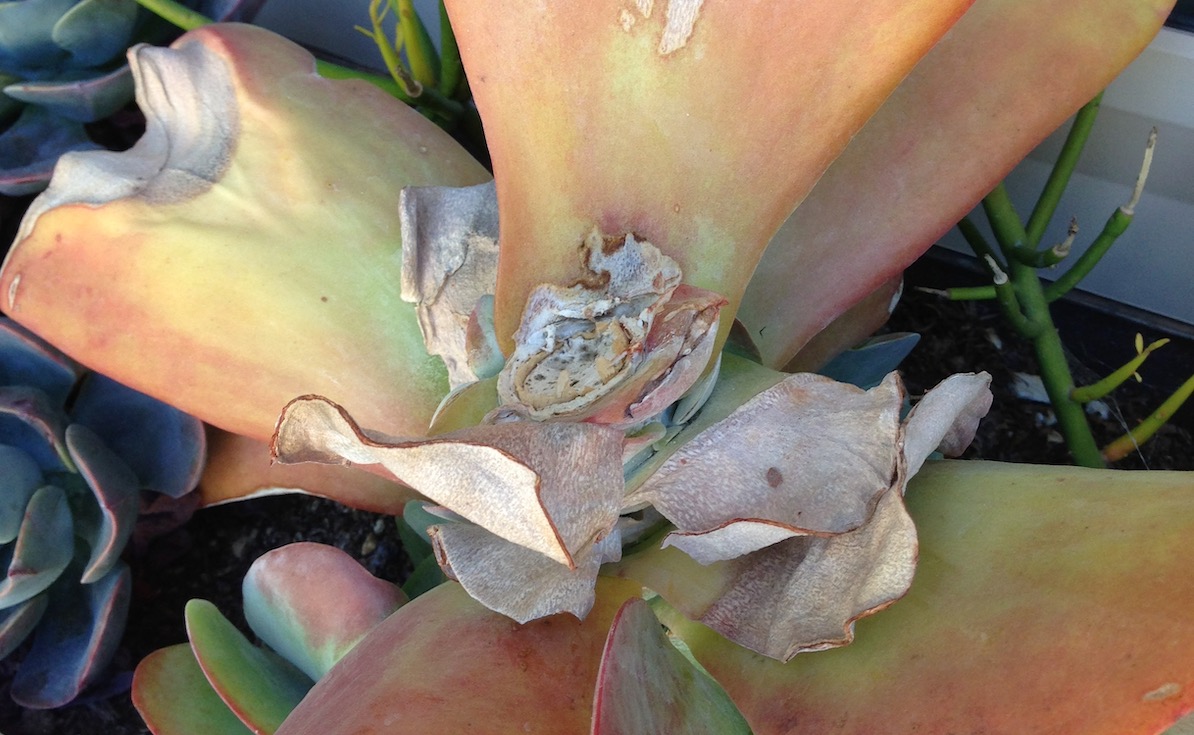
Kalanchoe luciae, dry & brittle leaves
The key to making leaves stay or turn vivid shades of red and orange is to give them lots of sun short of burning. Just as the pigment melanin protects pale skin by turning it brown, red pigments protect leaves from excess sun.
Paddle plant varieties
The most common variety of Kalanchoe luciae, shown above, has oval leaves that form fans. Over time a single specimen will form a colony.
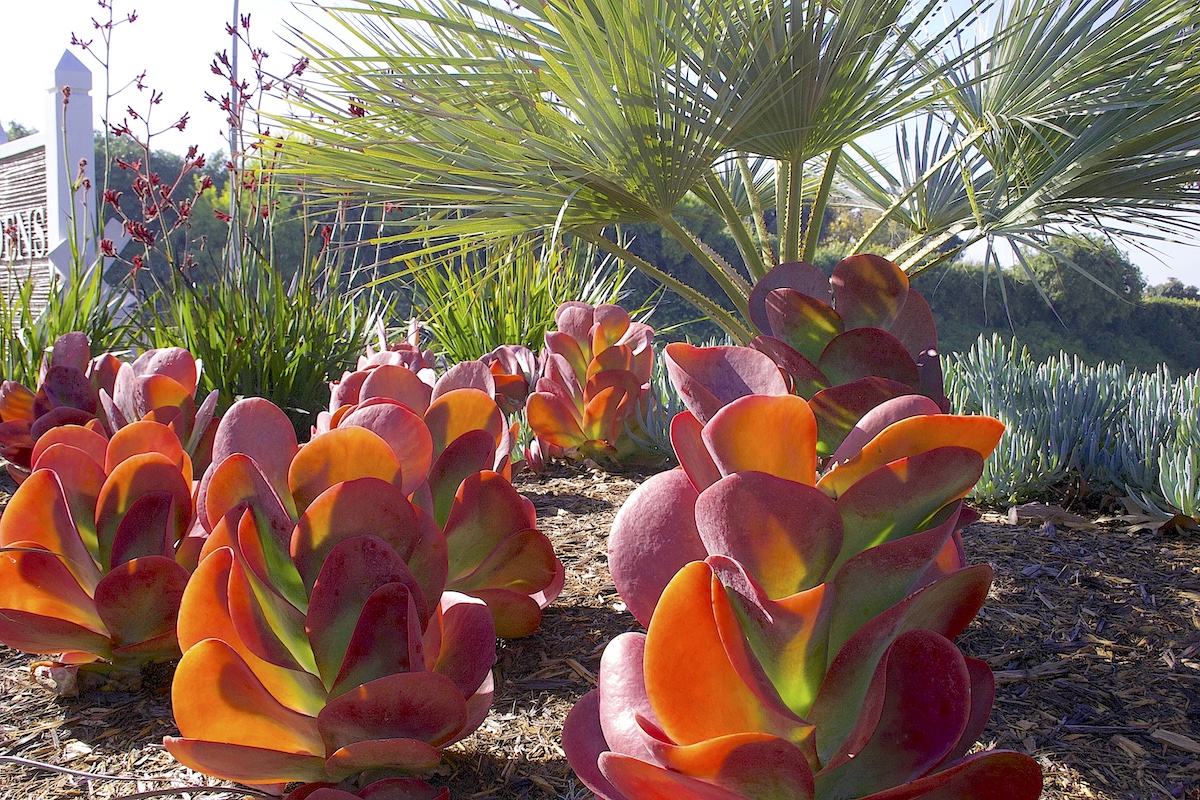
This dramatic and intriguing variation of Kalanchoe luciae has larger, wavier leaves, and grows taller.
Kalanchoe luciae ‘Fantastic’
The cultivar Kalanchoe luciae ‘Fantastic’ is variegated, meaning its blue-green leaves are streaked with cream, pink, rose-red and buttery yellow.
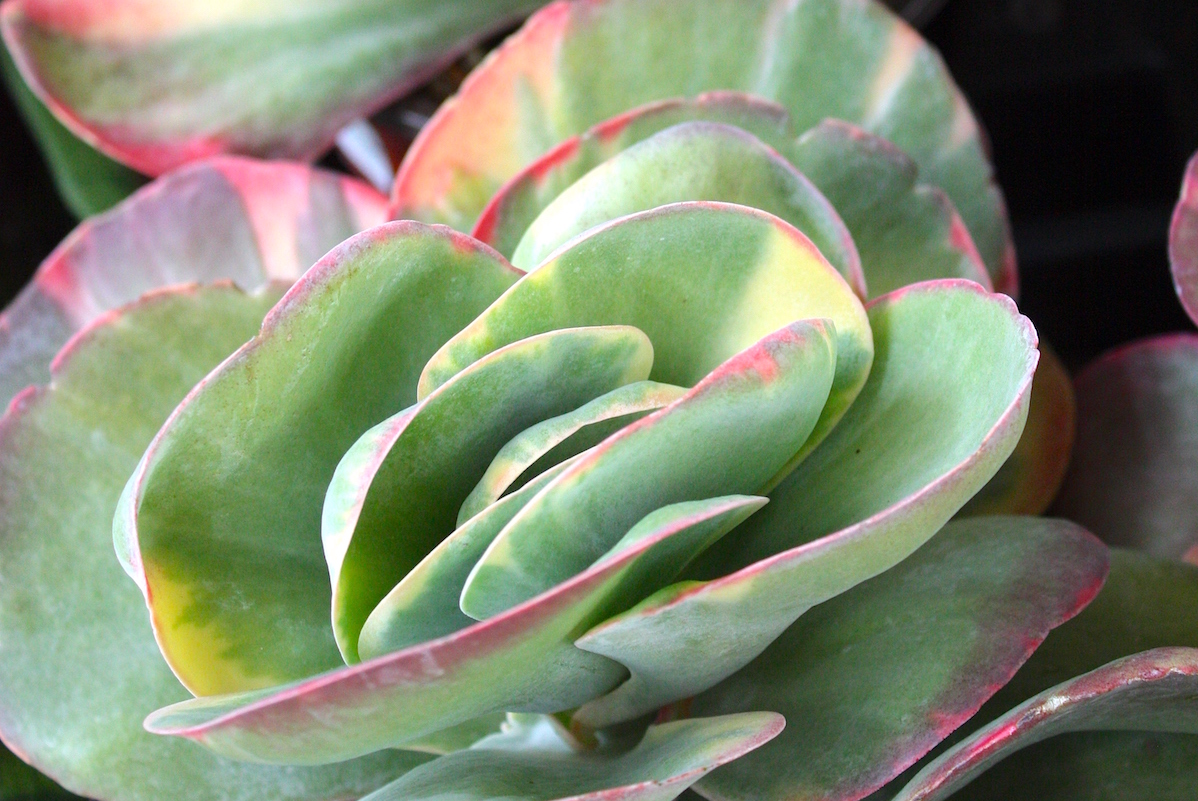
I first saw Kalanchoe luciae 'Fantastic' in February 2011, at a nursery near Santa Barbara. They’re now fairly common.
Like most variegates, ‘Fantastic’ is easily damaged by harsh sun and temperature extremes.
I don’t grow Kalanchoe luciae ‘Fantastic’ in the open garden, but rather in pots or window boxes.
In my Zone 9b inland climate, it does best with sun in the early morning or late afternoon and the rest of the day in bright or dappled shade.
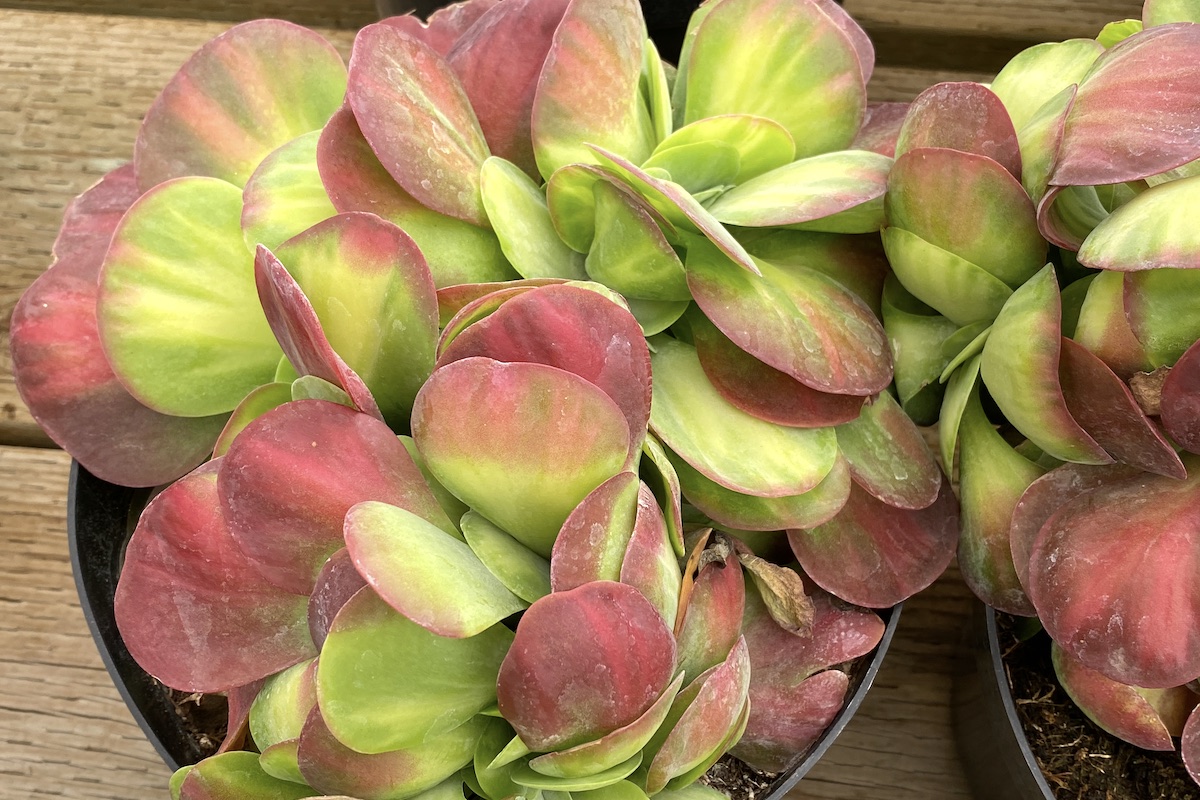
There’s also a crested form of ‘Fantastic’ with compact, clustered leaves.
Kalanchoe luciae ‘Dragonfire’
In 2019 Altman Plants, a huge wholesale grower of succulents located in Vista, California near San Diego, patented the cultivar Kalanchoe luciae ‘Dragonfire’.
In early 2022, I obtained 'Dragonfire' from Altman’s retail nursery in Escondido, Oasis Water Efficient Gardens. In my garden northeast of San Diego, ‘Dragonfire’ has proved to be robust, fast growing, tough and colorful. Truly a showstopper. It starts readily from cuttings, looks good wherever I put it, and is a plant everyone notices.
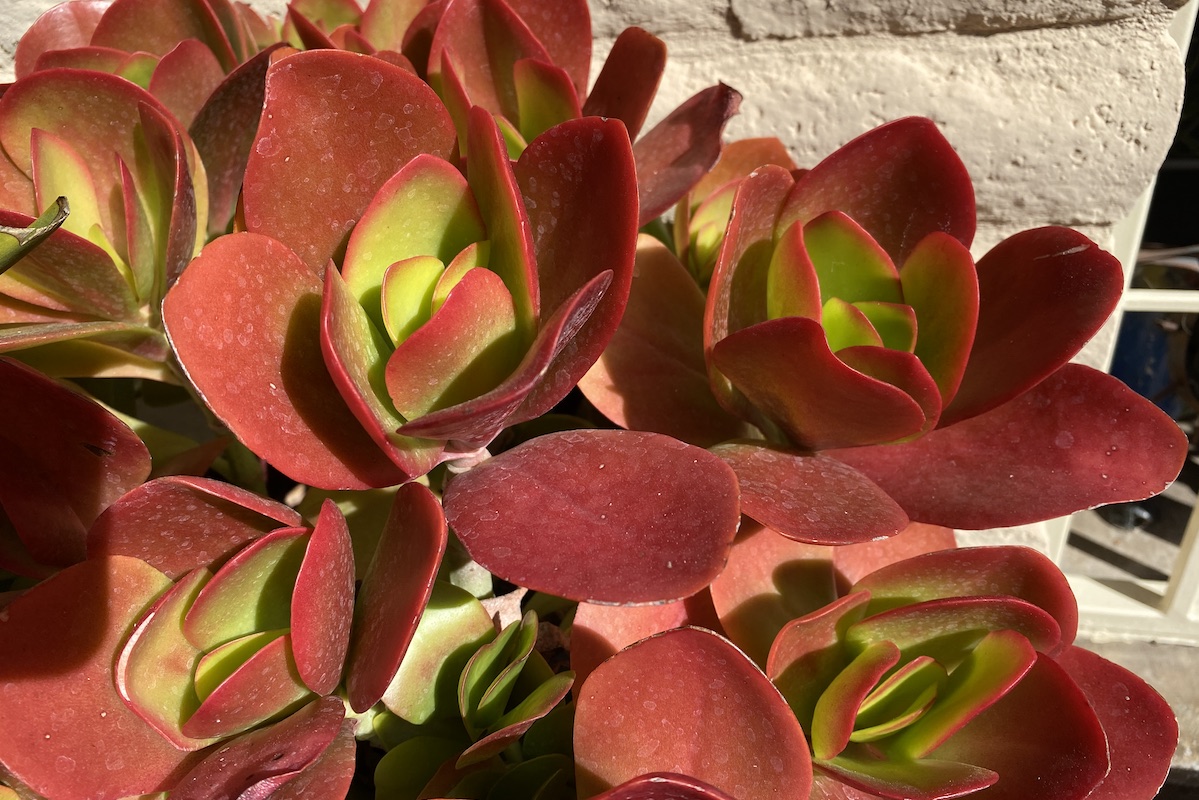
I was afraid to give 'Dragonfire' a lot of sun, but when I did, it went from lime green to bright red.
It takes time for newly introduced plants to become widely available, but I anticipate that ‘Dragonfire’ will eventually become even more popular than Fantastic.
About the white powder
Did you notice how glossy the leaves of 'Dragonfire' are compared to those of 'Fantastic' and the species? It’s because they lack a powdery coating.
This fine white powder has lots of names: pulverulence, farina, bloom, film, and botanically, epicuticular wax.
What appears to be chalk dust are microscopic crystals that repel water.
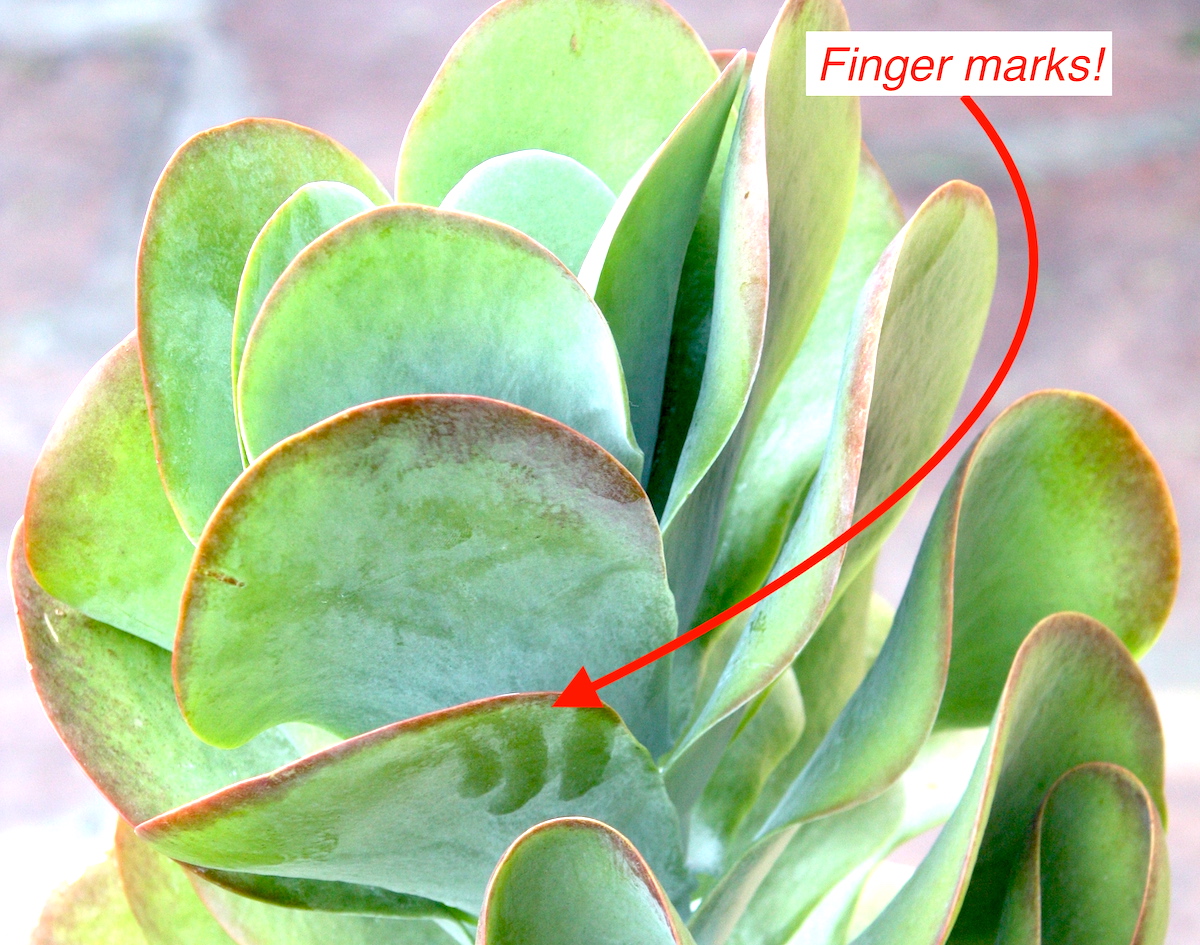
Don’t touch a plant's pulverulence, unless an irreversible mark on a leaf doesn’t bother you.
Farina---and by the way farina is Latin for flour---comes off when you touch the leaves.
Care of Kalanchoe luciae
Kalanchoes, which are from Madagascar and South Africa, do well along the California coast, from the Bay Area south; and in drier areas of Florida and Hawaii.
Although some species of Kalanchoe are fine as house plants, don’t expect paddle plants to look their best indoors unless you have a greenhouse or sunroom.
If you live in a mild, maritime climate, you can grow more than 40 beautiful and collectible kalanchoes.
Frost
If frost or scorching sun are concerns, grow kalanchoes in sheltered microclimates, such as patio pots under eaves, and cover in-ground specimens during temperature extremes.
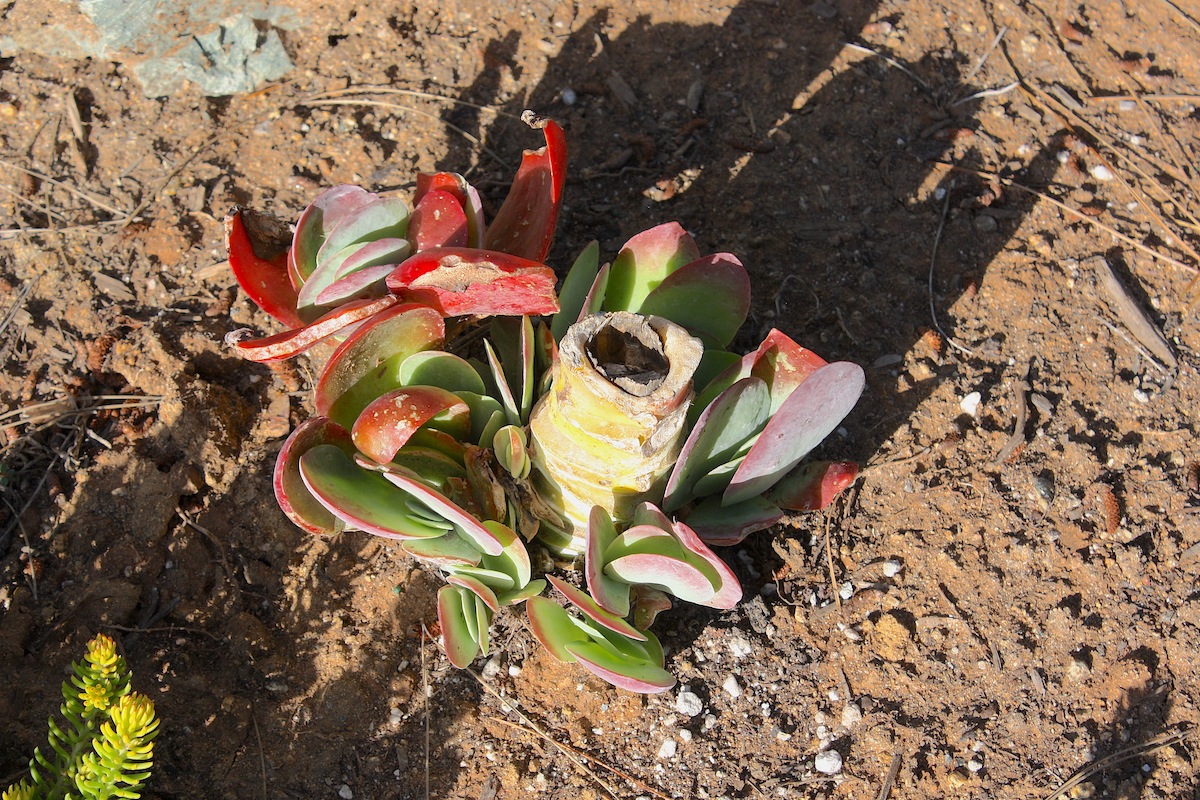
This paddle plant collapsed into a limp mess after January temperatures dropped into the 20s. The main stem died, but the roots survived and produced plantlets.
Flowering and Propagation
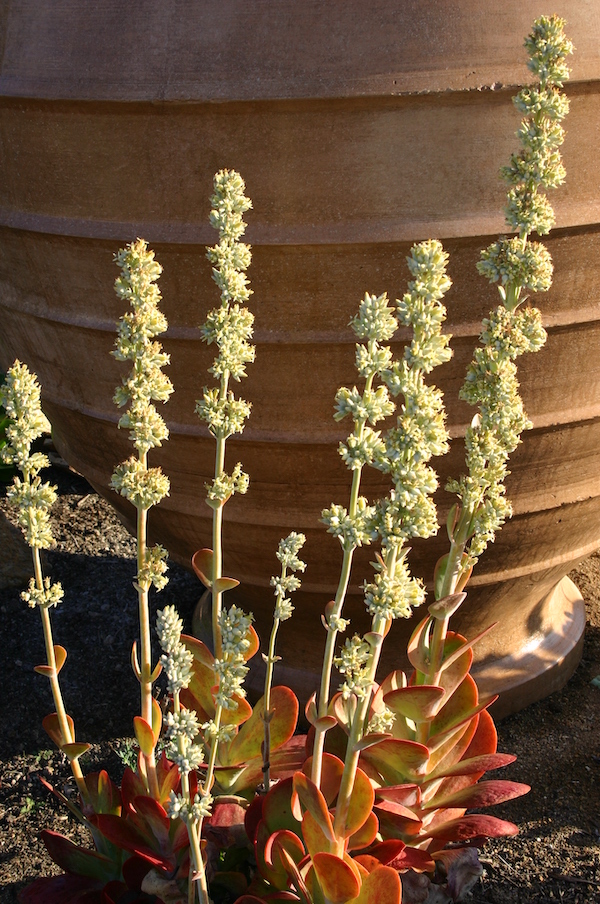
A caution to pet owners: Kalanchoe luciae flowers contain cardiac glycosides that are toxic to animals.
True, Kalanchoe luciae flowers are dramatic and intriguing. Entire plants elongate into spires worthy of Buddhist monasteries. Blossoms attract bees, butterflies and hummingbirds, but they also drain plants of energy, causing them to be weak, spindly and eventually unsightly.
When blooming plants are spent, remove the elongated part, and hopefully offsets at the base will fill in.
Or do what I do: As soon as you see flowers form, pinch or cut them out. This keeps plants compact and forces the formation of offsets.

Flower stalks may produce plantlets at leaf axils. A stem like this one can be cut apart and the pieces planted.
Take cuttings
Cut right above a pair of leaves. Let cuttings sit for a day to heal, then insert into a pot of commercial potting soil.
Roots form from the same tissue that produces leaves, so make sure leaf bottoms---where they emerge from the stalk---touch the soil.
How to cut back a blooming plant
If a lot of the plant's energy has gone into the formation of a flower stalk, the plant will be less robust than if you had cut the stalk when it began to form. That said, if the plant looks healthy, it will likely recover and branch where you cut it.
- Cut about half way up the total height of the plant (not counting the flower stalk), right above where a pair of leaves emerge from the stalk.
- Protect remaining leaves that are suddenly exposed to sun, so they don't burn. A lightweight cloth laid over the plant will do it. If it's in a pot, move it into dappled shade.
- It's normal for leaves below the cut to wither and die at their tips.
- If mini flower stalks grow from the truncated stem, pinch them out.
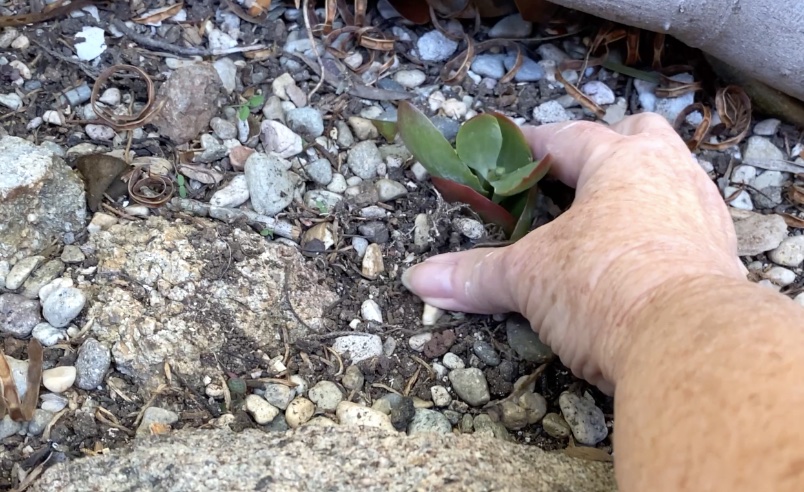
Planting a Kalanchoe luciae cutting
Soil and water
Any commercial bagged potting soil labeled for succulents is fine. I generally amend it with pumice (about 30%) to enhance aeration and drainage. Also optional is to add timed release all-purpose fertilizer granules, about ¼ cup per gallon of soil. Or not. Fertilizer promotes flower formation, which you may not want.
Keep soil about as moist as a wrung-out sponge.
Pests
Kalanchoe luciae is not vulnerable to pest damage other than snails, which can ruin smooth, oval leaves by chewing holes in them. Spread snail bait around the base of the plants. I prefer Sluggo, which is safe for pets, birds, and other beneficials.
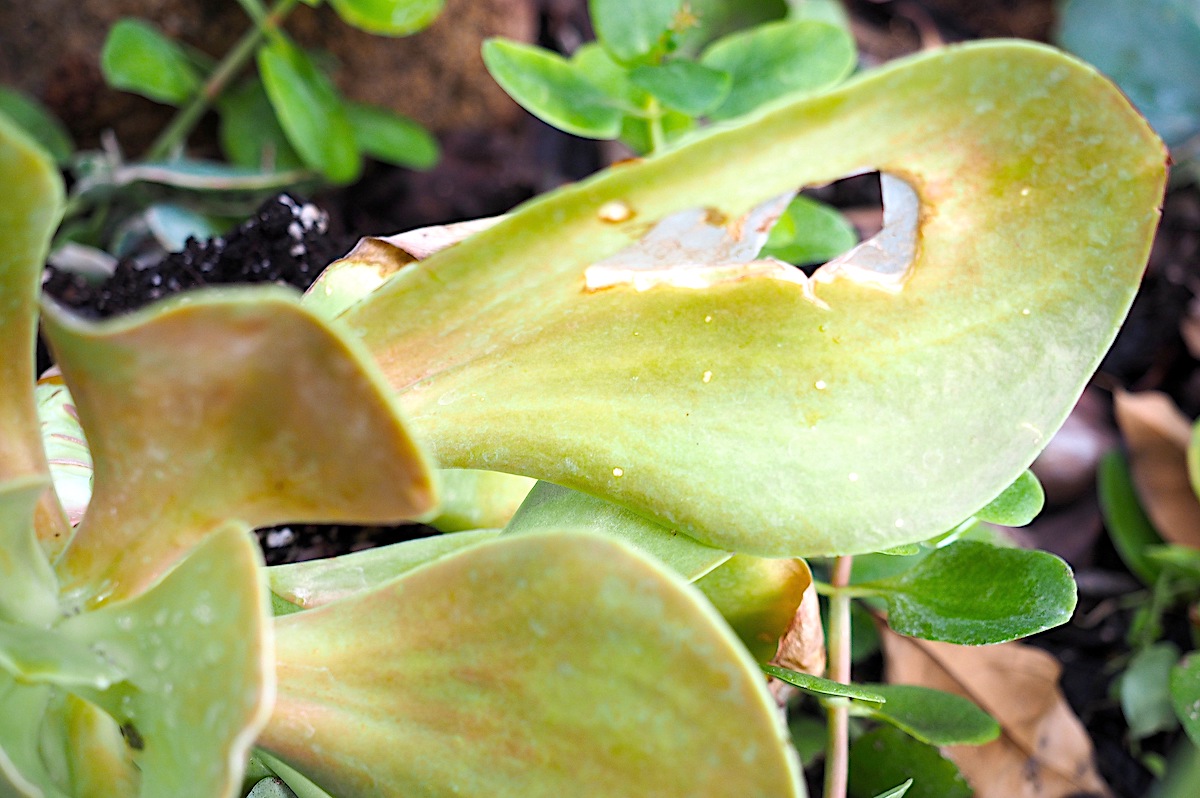
Snail damage
Idea Gallery
Kalachoe luciae is great in containers, pots and garden beds, either solo or in combination with other succulents. In the gallery below are design ideas from my garden and others I’ve visited. May they inspire you!
Related Info on This Site
Kalanchoe Details, Photos and Varieties
Kalanchoe: Details, Photos and Varieties Native to Madagascar, kalanchoes thrive outdoors in zone 9 (and higher if in dappled shade). Protect from frost. See All Succulent Types Aeonium Agaves Aloes Cactus Crassula Echeveria Euphorbias Ice Plants Kalanchoe Portulacaria Senecio >> Jump Down to the Gallery All the kalanchoes in the video are also in the…
How to Keep Succulents Colorful
Are your succulents well stressed? Given the right conditions, certain varieties turn from green or blue to brilliant reds, oranges and yellows. See 50 before-and-afters. How much a succulent “colors up” depends on…

